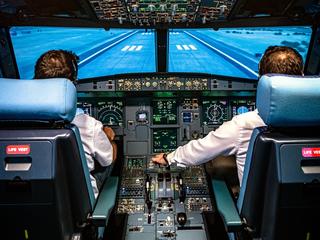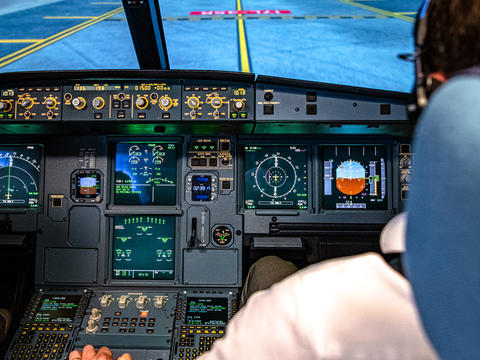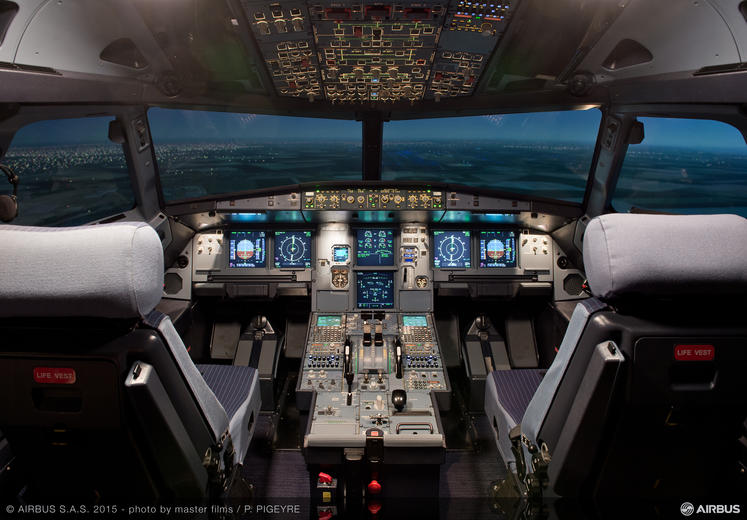Ever wondered how pilots train to handle any situation, from landing in challenging weather to reacting to the most unexpected events? A large part of their expertise is forged on the ground, inside one of the most sophisticated pieces of technology in aviation: the Full Flight Simulator (FFS).
With a demand for more than 600,000 new pilots over the next 20 years, ensuring the highest standard of training is a cornerstone of aviation safety. Full Flight Simulators play a significant role in pilot training processes.
What is a Full Flight Simulator?
It is not a sophisticated video game. It is a functional replica of a specific aircraft cockpit, mounted on a multi-axis motion system. Switches, displays, sounds, and feedback represent what a pilot would experience in a real aircraft cockpit.
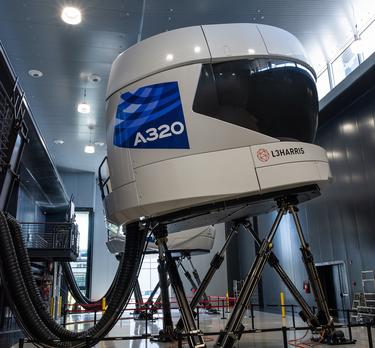
When combined with expert flight instructors, a FFS allows flight crews to train in a safe, controlled environment offering diverse and complex flight scenarios to train all kinds of technical and non technical situations, with various contexts (weather, airport, geographic areas etc). This ensures that pilots are always prepared for the unexpected, maintaining the highest safety standards across the industry.
There are several defined levels of flight simulators as categorized by the EASA and the FAA: Level A, Level B, Level C and Level D. Of these, the latter is the most advanced with full motion, high-resolution visuals, and very strict performance standards. Level D devices simulate all aircraft systems that are accessible from the flight deck and are critical to training. Experienced pilots can even complete entire type ratings without ever flying the real aircraft, thanks to the fidelity of this simulator category. This is known as ‘zero-flight time’ training.
How realistic are these aircraft simulators?
A Level D FFS combines several key technologies to create an immersive experience:
- Dynamic motion system: Powerful electric or hydraulic actuators tilt and move the simulator to replicate the perceptions of acceleration, turning, and turbulence. The new FFS for our A350 fleet, for instance, uses the very latest 100% electrical motion technology for smoother and more realistic movements.
- High-fidelity visuals: A 180-degree high-definition visual system displays a realistic representation of the outside world, from airports to weather conditions, at any time of day or night. The latest generation of visuals are featured in Airbus’ newest simulators.
- Authentic Soundscape: Many of the sounds in the cockpit that a pilot would experience in real life – from the engines roaring at take-off to the various beeps, voice-callouts and verbal warnings – are faithfully reproduced.

How often do pilots undergo flight simulator training?
For any pilot, training is a continuous journey throughout their career. A new pilot on a particular type will experience full-flight simulator training for the first time during their ‘initial training’ phase. Commercial airline pilots who are already flying the type are required to return to the simulator approximately every six months for licensing purposes as well as to refresh their skills and knowledge by practising normal and emergency procedures.
As much as the authorities require regular training to support continuous improvement, this also mirrors Airbus’ Flight Training Reference philosophy, to guarantee the quality and consistency of our training programmes.
How is full flight simulator quality guaranteed?
Every FFS must be evaluated and certified by aviation authorities like the EASA (European Union Aviation Safety Agency), the FAA (Federal Aviation Administration) to ensure that the simulator's performance reflects that of the actual aircraft and grants the validation of the training performed by each Authority.
Did you know that when a simulator is moved, even from one building to another, it must undergo a re-certification process before it can be used to train pilots again? This is a process currently underway as Airbus’ simulators are moved into the new state-of-the-art Airbus Europe Training Centre in Toulouse, France. Discover more about our new Airbus Europe Training Centre.
Discover more stories
Continue Reading

Aviation safety through collaboration: Inside Destination 10X
Web Story
Safety
Destination 10X is a platform dedicated to enhancing safety across the aviation industry, organising regular regional workshops to discuss best practices.
Greater maintainability for improved safety for helicopters
Web Story
Safety

Combating information warfare: How Airbus is helping win the fight for the truth
Web Story
Defence
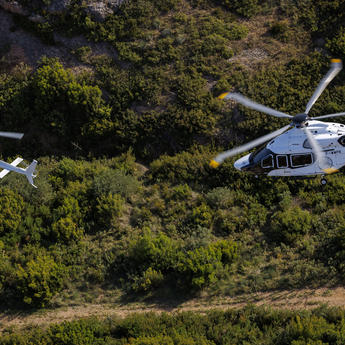
Creating a community of mentors to support the next generation of pilots
Web Story
Helicopters
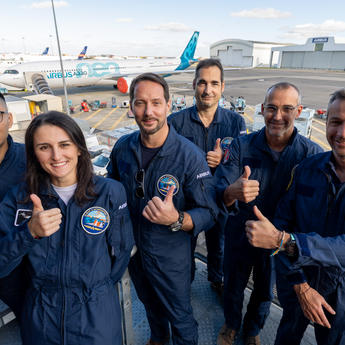
From Orbit to Flight Test: Thomas Pesquet Joins Airbus
Web Story
Commercial Aircraft




